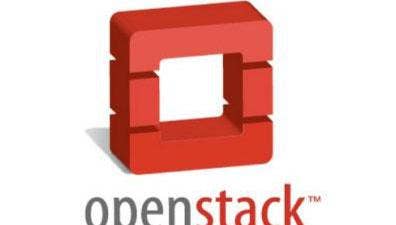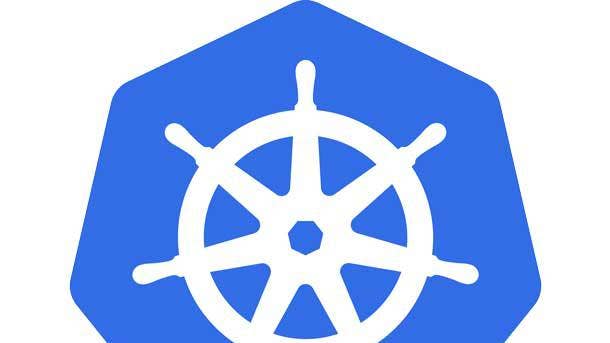Platform9 CEO Sirish Raghuram On The Road From OpenStack To Kubernetes
Platform9 CEO and co-founder Sirish Raghuram discusses the lessons learned from OpenStack and how they can be applied to the benefit of Kubernetes.

Will Kubernetes Repeat OpenStack's Mistakes?
The Kubernetes market is as hot as any in the IT industry as the container orchestration technology first developed at Google has emerged as something close to a standard layer of cloud infrastructure.
The hyper-scale cloud giants and other industry heavyweights are rushing to market hybrid platforms built upon the open source technology—Google is making a big bet on Anthos, VMware is preparing to challenge with Tanzu, and Red Hat, now owned by IBM, has done well with OpenShift.
At the same time, smaller players like Docker, Rancher, D2iQ, Kublr, Mirantis, SUSE, and others are all jostling for market share for their independent Kubernetes platforms.
As is Platform9, a Sunnyvale, Calif.-based startup that's looking to deliver the core Kubernetes technology as a managed service.
It's all reminiscent of the days of yore, when OpenStack, another game-changing open source platform, was all the rage.
Platform9, and its SaaS approach to easing cloud infrastructure deployment, was born in that OpenStack market, but has since shifted focus to Kubernetes.
Sirish Raghuram, Platform9's CEO and co-founder, talked to CRN about the lessons learned from OpenStack, and how they can be applied to the benefit of Kubernetes.

It Feels Like OpenStack 2.0
At the peak of its hype cycle, OpenStack was routinely touted as the future of private cloud infrastructure, and a serious alternative to adopting public cloud.
That project, and the great hopes that rode on it, were largely fueled by the ambition of giving developers control of their infrastructure, Platform9 CEO Sirish Raghuram told CRN.
"If you look at the OpenStack community, and where they were having the most traction, it was in companies interested in enabling developers with self-service and automation and productivity," Raghuram said.
Kubernetes can largely be described in the same way.
Back in 2013, OpenStack saw a tipping point, as industry heavyweights like Cisco, IBM, NetApp, Hewlett-Packard and Red Hat were throwing their hats into the ring, "saying us too, us too," Raghuram said.
With Kubernetes, a similar dynamic is playing out among Google, Microsoft, AWS, VMware and Red Hat.
"The players are different, but in some ways history is repeating itself," he said. In that sense, "it feels a lot like OpenStack 2.0."
But while there are glaring similarities, it’s some key differences that will likely ensure that Kubernetes thrives where OpenStack wilted.
"It feels like the project is beyond critical mass today," he said.

Balkanization Woes
OpenStack evolved into a series of loosely interconnected projects that, while uniquely powerful, took a lot of skill and effort to implement together.
The rush of corporate backers making major investments in the open source technology further balkanized the project, as those companies often focused on developing add-ons and integrations to support their own interests, and not the work happening upstream.
That's not exactly the case with Kubernetes, as the core project is still a cohesive platform, Raghuram said. But the core project isn't the end of the conversation when deploying containerized workloads at production scale.
"We're already seeing balkanization to some point," he said.
In the case of Kubernetes, the risk of undermining the goal of an interoperable, platform-independent environment stems not from the direct project per se, but all the surrounding services that round out the container stack.

Follow The Roadmap
The Cloud Native Computing Foundation has kept tight control over the Kubernetes project and has been incubating companion technologies to round out the stack.
To help partners and their enterprise customers better understand what solutions to consider for their unique use cases, the non-profit has published its CNCF roadmap that details a path to comprehensive container adoption.
One technology on that roadmap that's essential for enterprises deploying hybrid applications is the Istio service mesh. And four other open source projects are increasingly important components, Raghuram said.
Those are Prometheus, to monitor and instrument containerized applications; the ELK Stack for logging and trouble-shooting (which constitutes Elasticsearch, Logstash and Kibana); Harbor, a container registry needed for high availability in production; and Jaeger, emerging as a standard technology for tracing application logs across microservices.
Increasingly, however, the cloud giants are promoting competitive technologies to those on the CNCF roadmap. Those threaten the cohesion and standardization that Kubernetes aims to achieve, Raghuram said.
For example, AWS is advising customers to use its native CloudWatch service, rather than Prometheus, for monitoring. Google does the same with Stackdriver.
"Both have conflicting services for a number of things on the CNCF roadmap," Raghuram said. "They might offer proprietary solutions rather than everything on the roadmap."

Cloud Angles And Agendas
While every cloud giant is pushing some form of Kubernetes, they all have different angles to play.
Google, which developed and then open sourced the technology, sees Kubernetes as its key to advancing Google Cloud Platform in the enterprise. For AWS, building a Kubernetes service was more about checking a box they needed to have.
"Google is using it to drive a wedge in the market," Raghuram said. "Amazon is more defensive."
VMware is interested in pushing vSphere, and the private cloud leader has introduced Project Pacific to integrate Kubernetes into that proprietary environment. Red Hat, now owned by IBM, has taken a commanding position in the market with a highly prescriptive approach to Kubernetes through OpenShift, which is delivered on a full Red Hat Stack.
Those opinionated platforms can undermine the goal of delivering truly interoperable environments.
"Kubernetes alone may be portable, but every company offering Kubernetes is pushing a different agenda," Raghuram said.
"So they can still balkanize the cloud-native transformation environment. That’s a big risk enterprises have to be wary of."

Cloud Giants Pave Way For Independent Vendors
Even though Kubernetes balkanization is happening through adjoining services, the leading cloud vendors "are also showing people what is possible, so in some ways they're also educating the customer base," Raghuram said.
And those industry giants can bring unique resources to drive the Kubernetes market in a way that OpenStack vendors fell short.
One challenge companies like HPE and Cisco had in promoting OpenStack adoption was their salesforces "weren't great at selling complex software solutions built around hardware," he said. Their go-to-market approaches and sales talent weren't well-equipped "to talk about the [OpenStack] solution the way it needed to be talked about."
The cloud giants are unlikely to repeat those mistakes with Kubernetes, Raghuram said.
Unlike the hardware vendors and their legacy enterprise sales strategies, Google and AWS have thrived with sales models that pull inbound business, where developers organically start spinning services and clusters up.
The hyper-scalers also field sales talent adept at working with cloud-native solutions, he said.
The benefits brought by those cloud giants create the opportunity for the emergence of large, independent Kubernetes companies, the Platform9 CEO said.

Kubernetes Ate OpenStack
While OpenStack has largely become a niche solution, that fate might be less a precedent for Kubernetes, and more a result of its success.
To a large degree, the same community that embraced OpenStack is embracing Kubernetes, Raghuram said.
"As containers become more mainstream and get more developer mindshare, companies think, why not go all the way to containers," he told CRN.
A prominent webscale company told Platform9's CEO two years ago that it missed the whole virtualization play but figured it might as well leapfrog OpenStack and go straight to containers.
"For classic enterprise DevOps use cases, containers came around, drove more mindshare, and people said, 'if we're going to make a change, why stop at IaaS'," he said.
Which raises the million-dollar question: "What would have happened to OpenStack if containers didn't emerge as an alternative?"
"I think it would have stuck around," Raghuram said.

Embrace The Core
Platform9's approach to Kubernetes follows what it did, and still does, with OpenStack.
"The way to monetize open source is to embrace the open source technology and deliver it as a service," Raghuram said. "Customers want upstream open source technology, not to have some proprietary fork."
That's why Platform9 has aligned itself with a SaaS model delivering the set of core services built around both OpenStack and Kubernetes.
With that approach, the startup is looking to play what it sees as an advantage over the industry heavyweights.
Customers serious about Kubernetes invariably either want a hybrid cloud environment, or they need the capability of adopting multiple clouds, Raghuram said.
That often rules out Kubernetes solutions from the likes of Google, Amazon, and VMware, which aren't viewed as vendors that truly favor hybrid and multi-cloud deployments, he said.
"Big vendors make a lot of waves and get tons of coverage," Raghuram said, but they "can't service the needs and challenges of those customers the way Platform9 can."